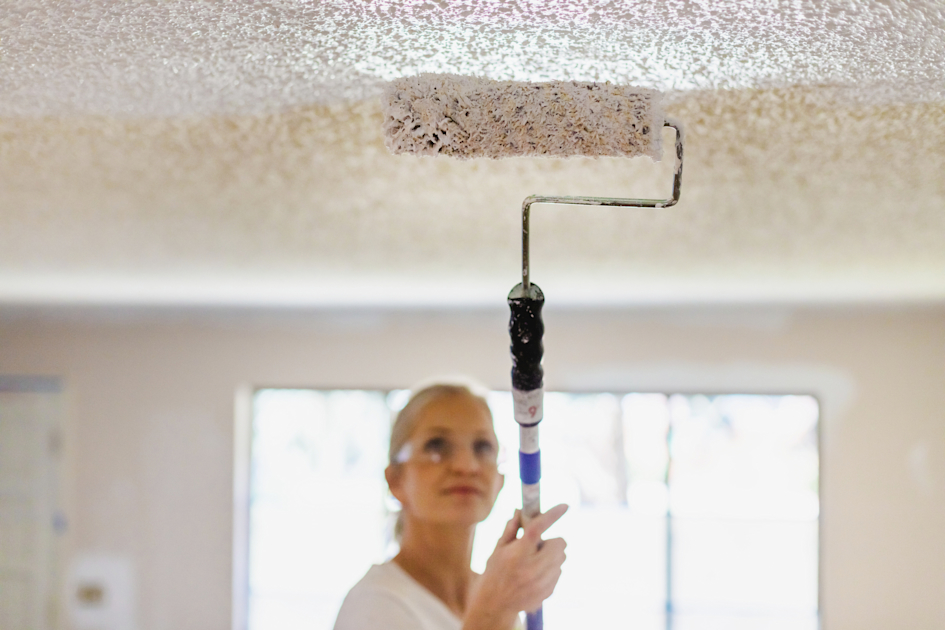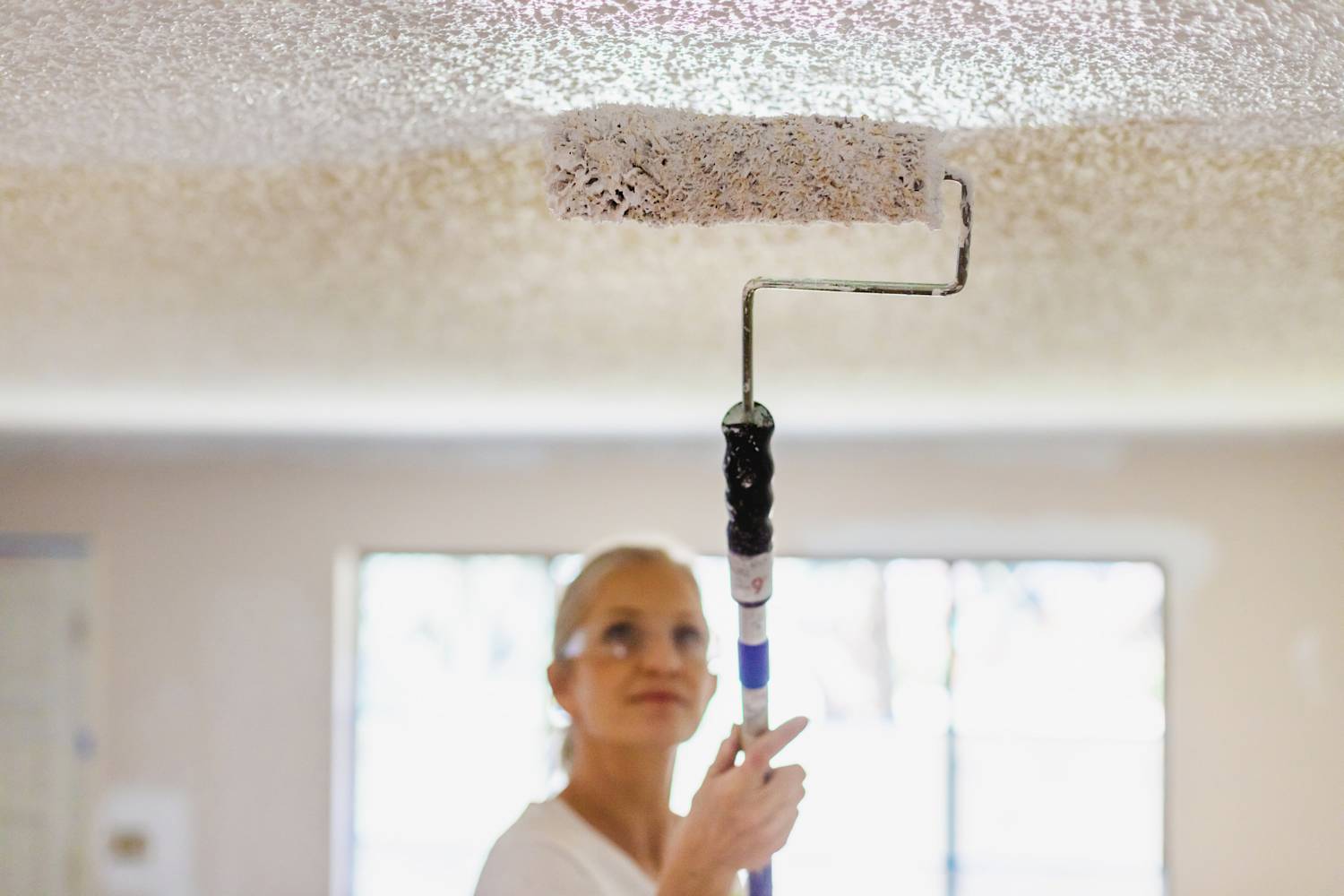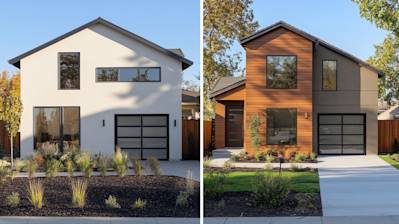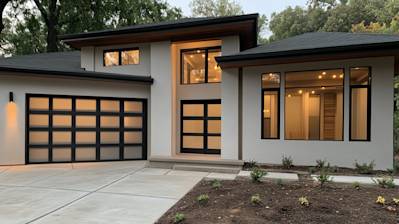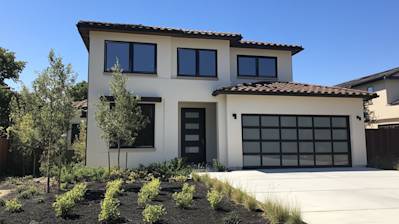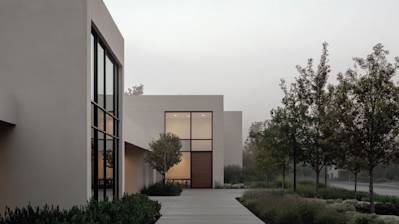When contemplating a home redesign or renovation, many homeowners tend to overlook one critical aspect: the ceiling. However, the ceiling plays a significant role in setting the atmosphere of your home. While a smooth, unadorned ceiling might suit your minimalist design concept, you might consider a textured ceiling to add depth and character to your space. From popcorn ceilings to knockdown textures, an array of "ceiling texture types" can give your home a unique makeover or beautifully enhance its architectural style. This article will detail some of the different ceiling texture types, assisting you in making an informed decision that caters to both your aesthetic and functional preferences.
An Introduction to Ceiling Texture Types
The world of "ceiling texture types" is diverse and expansive, highlighting different design trends over the years and presenting homeowners with an array of options to choose from. The interior design style, ease of application, depth brought to the room, acoustics, and other factors all play a role in determining the appropriate ceiling texture. The result is a statement piece that completes the overall design flow in your home.
Popular Ceiling Texture Types
Residential and commercial properties feature various ceiling textures, each offering its distinct flavor to the overall interior decor. Here are some of the more widely recognized and used types:
- Popcorn or Acoustic Ceiling Texture
- Knockdown Ceiling Texture
- Swirl Ceiling Texture
- Stomp Ceiling Texture
- Orange Peel Ceiling Texture
- Skip Trowel Ceiling Texture
Taking a Closer Look at Different Ceiling Textures
Popcorn or Acoustic Ceiling Texture
The popcorn ceiling texture, also known as acoustic ceiling texture, rises in little bumps, resembling popcorn. Made by spraying on a ceiling texture product, the end product is a uniform surface offering sound absorption capabilities, thus giving its alternate name 'acoustic ceiling'.
Knockdown Ceiling Texture
This ceiling texture type renders an elegant appearance that looks like stucco or plaster with an irregular pattern. The process of creating a knockdown texture involves applying joint compound (also known as mud) and then "knocking down" the surface using a knockdown tool, hence the name.
Swirl Ceiling Texture
Swirl ceiling texture offers a combination of elegance and artistry. It is created by applying a thin layer of compound and then creating swirls using brushes or other tools. The pattern could be continuous, leaving no space between the swirls, or it could have small breaks between each swirling pattern, creating a unique aesthetic.
Stomp Ceiling Texture
The Stomp ceiling technique involves using a stomp brush to dab into wet ceiling mud, which then forms the texture. This method allows a variety of patterns, all attributed to the several brush styles available. The Stomp ceiling texture offers a visually intriguing design with its abstract stippling.
Orange Peel Ceiling Texture
Dubbed 'orange peel' due to its resemblance to the skin of an orange, this texture type is subtle yet highly expressive. It is achieved by using a sprayer to layer texture material on the ceiling, followed by a short drying period before the texture sets.
Skip Trowel Ceiling Texture
Skip trowel texture is characterized by a Mediterranean vibe. An experienced professional will use a trowel to apply thin layers of mud in a skipping motion, creating the desired effect.
Choosing Your Preferred Ceiling Texture
Deciding on the best ceiling texture for your home might be challenging with various types available. However, understanding each option is crucial to determine which one fits your style, required maintenance, noise control needs, and application process preference. By understanding what each texture offers, you can transform your ceiling from purely functional to aesthetically impressive.
Frequently Asked Questions About Ceiling Texture Types
What is the purpose of ceiling texture?
There are a few different reasons why homeowners might opt for textured ceilings. In some cases, it's simply a matter of personal preference. Textured ceilings can add visual interest and break up the monotony of smooth walls. They're also a practical choice, as they can hide imperfections in the drywall and provide some amount of sound insulation.
How is ceiling texture applied?
Some ceiling textures are applied with a brush, while others require a more specialized tool. For example, a popcorn ceiling is typically applied using a sprayer, whereas a stippled or a skim coat texture might be applied using a trowel. The method of application will depend on the specific texture.
Can I paint over a textured ceiling?
Yes, it is possible to paint over a textured ceiling. However, this can be a bit more challenging than painting a flat surface. Depending on the type of texture, you might need to use a thicker nap roller or a paint sprayer to ensure that paint gets into all the nooks and crannies.
Can I change the texture of my ceiling?
Yes, if you're unhappy with your current ceiling texture, there are certainly ways to change it. This typically involves scraping off the existing texture, repairing any damage to the underlying drywall, and then applying a new texture. Depending on the extent of the work involved, it may be best to hire a professional.
What does "knockdown" texture mean?
Knockdown is a type of texture that gets its name from the method of application. It starts with the application of a layer of texture using a sprayer or a brush. After the texture has had a chance to partially dry, it's lightly "knocked down" using a drywall knife. This creates a subtle, mottled pattern on the ceiling.
Is popcorn ceiling still popular?
Popcorn ceilings were quite popular in the mid- to late-20th century. However, their popularity has waned in recent years due to its dated look and the challenge of maintenance. Additionally, it's worth noting that some older popcorn ceilings contain asbestos, which may pose health risks and complicate removal.
What is the difference between "orange peel" and "knockdown" ceiling texture?
The primary difference between these two textures lies in their visual appearance and texture. Orange peel texture resembles the skin of an orange with its tiny bumps and smooth surface, while knockdown texture is more random and resembles a stucco finish, having larger, flattened bumps across the surface.
How do I repair a textured ceiling?
Fixing a textured ceiling can be challenging, depending on the type of texture and how extensive the damage is. For minor damage, such as small cracks or holes, you might be able to repair it by simply patching and re-texturing the damaged area. For more extensive damage, you might need to remove and replace a section of the ceiling, then retexture and paint to match the existing ceiling.
Pros and Cons of Different Ceiling Texture Types
Knockdown Texture
A popular option among modern builders and homeowners, knockdown texture offers a mottled pattern on the ceiling that resembles stucco but has a more subtle look.
Pros of Knockdown Texture
- Versatility: Knockdown texture works well in a variety of settings, from modern to traditional interiors.
- Mask Imperfections: Because of its uneven surface, the knockdown texture does an excellent job of hiding flaws and imperfections in the original ceiling material.
- Acoustic Damping: The texture can absorb and diffuse sound, aiding in the acoustic properties of a room.
Cons of Knockdown Texture
- Difficult Application: Applying knockdown texture requires skill and practice, which could make DIY applications difficult.
- Maintenance: It’s very hard to clean due to its uneven surface. Any debris needs to be cleaned by hand.
Popcorn Texture
Also known as acoustic ceiling, popcorn texture is a ceiling texture type that was very popular between the 1950s and 1980s due to its simplicity in application and affordable pricing.
Pros of Popcorn Texture
- Sound Damping: Perfect for rooms with high noise levels, such as entertainment spaces or large communal areas.
- Effortless Application: It's very easy to apply even with less painting experience.
- Low cost: It's a cost-effective way to add texture to your ceiling.
Cons of Popcorn Texture
- Outdated Look: Some find the bumpy look of popcorn texture off-putting or outdated.
- Difficult to Repair: Popcorn textured ceilings can be hard to repair due to their unusual texture.
- Health Issues: Older popcorn texture might contain asbestos, which can have serious health consequences if the ceiling is disturbed.
Orange Peel Texture
Orange peel texture offers a subtle, delicate pattern similar to the skin of an orange. It's pretty popular due to its modern appearance and its ability to match different styles.
Pros of Orange Peel Texture
- Sleek Look: It has a smooth surface compared to other texture types giving a more modern feel.
- Easy to Repair: You can find many kits readily available in the market, making it easy for homeowners to fix small damaged areas.
- Hide Imperfections: It's very good in concealing installation flaws.
Cons of Orange Peel Texture
- Difficult Application: Although it's easier to repair, the application of orange peel texture requires an accurate mixing of compounds which can be complex.
- Moisture Absorption: Orange peel textures tend to absorb more moisture, making them less desirable in damp locations.
Swirl Texture
Considered in the high-end of ceiling texture types, swirl texture is visually striking and offers a formal touch to any interior.
Pros of Swirl Texture
- Stylish: It adds an elegant and luxurious touch to any interior design.
- Variety of Patterns: It comes in several different swirl patterns.
- Durable: Once applied, it can last for a long time.
Cons of Swirl Texture
- Difficult to Apply: It's even considered one of the most difficult texture types to apply, demanding a professional touch.
- Cost: Due to its complexity and typically professional application, swirl textured ceilings are usually more expensive than other texture types.
Summary
Ceiling texture types can truly impact the overall look and feel of a space. There are so many types to choose from including styles such as popcorn, knockdown, smooth, and more, each with its own unique allure. The right texture can add depth, character, and individuality to your home's interior. It's clear that these textures do far more than meet the eye: they add a third dimension to the room and can elevate any space from ordinary to extraordinary.
Selecting between different ceiling texture types isn't just about aesthetics; it's also about functionality. Some textures, like the popcorn style, can provide excellent soundproofing, making it ideal for use in rooms where reducing noise is key. Other textures, like the smooth finish, offer a clean, minimalistic look and are easy to clean and maintain. What's more, some textures can help to hide imperfections or damage to the ceiling. With the various texture types available, homeowners can find the perfect balance between style, practicality, and durability.
Finally, applying a ceiling texture to your home can be a rewarding home improvement project that can add value to your home. The various ceiling texture types lend themselves to different styles and periods, allowing you to match the texture with your home's décor. Experimenting with different textures can help homeowners bring out their style and personality in their space. So whether you're looking for a modern slick and smooth finish or more traditional slapped or knockdown options, you'll surely be able to find a texture that matches your design goals. Experiment and have fun with it!
About Atlas Stucco
Meet Atlas Stucco, your trusted go-to Stucco Company located in the heart of Sacramento, CA. With years of experience under our belt, we have been proudly transforming homes with our high-quality stucco services. Committed to excellence, Atlas Stucco combines creativity, skill, and top-notch materials to deliver results that always exceed our clients' expectations. Our friendly team of professionals not only pledges to meet all your stucco needs, but also cherishes the personal connections made along the journey. We appreciate the opportunity to serve the Sacramento community and look forward to working with you on your next stucco project.
Tags: Ceiling Textures, Interior Design, Home Renovation,

